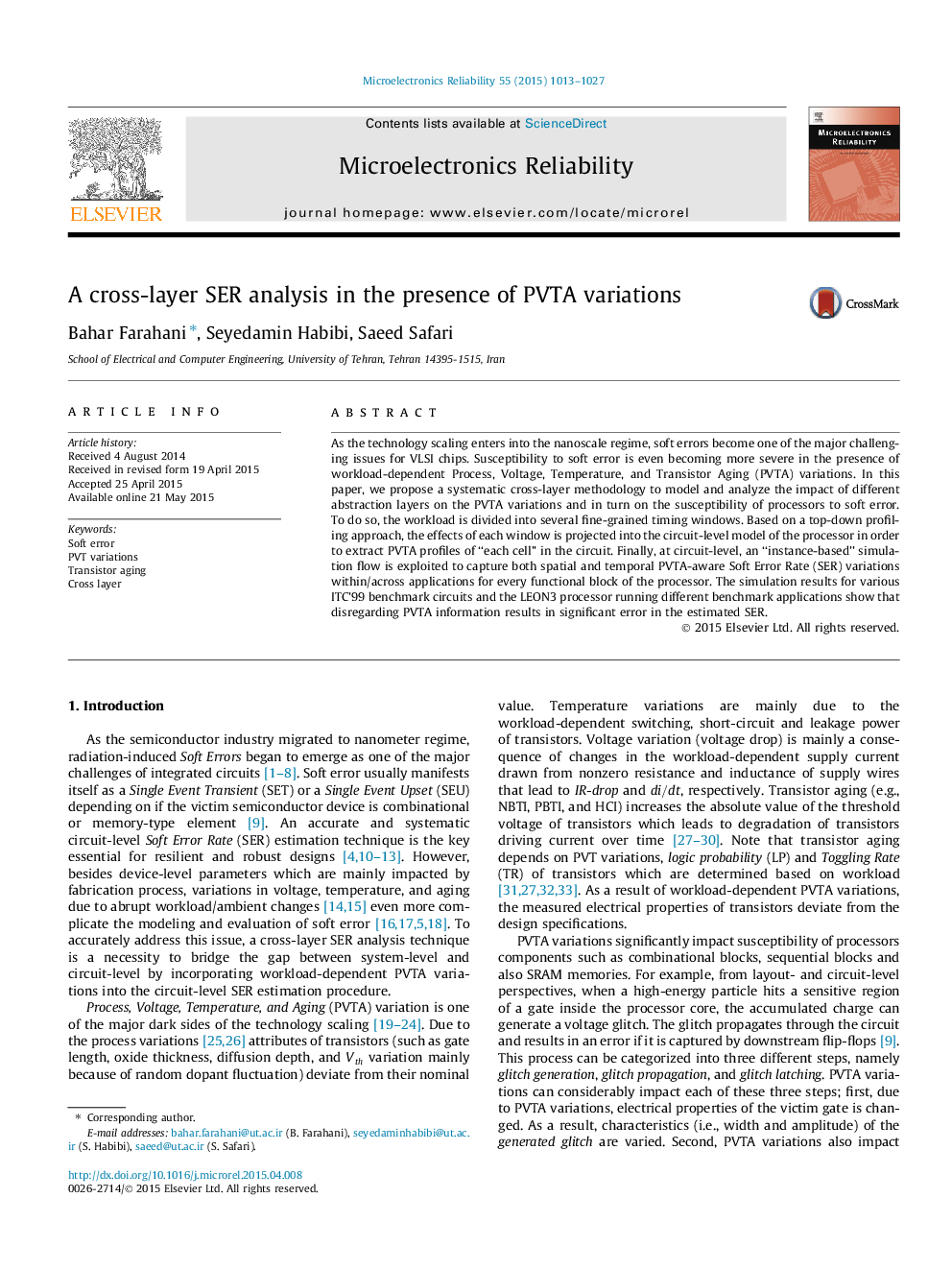| Article ID | Journal | Published Year | Pages | File Type |
|---|---|---|---|---|
| 544733 | Microelectronics Reliability | 2015 | 15 Pages |
As the technology scaling enters into the nanoscale regime, soft errors become one of the major challenging issues for VLSI chips. Susceptibility to soft error is even becoming more severe in the presence of workload-dependent Process, Voltage, Temperature, and Transistor Aging (PVTA) variations. In this paper, we propose a systematic cross-layer methodology to model and analyze the impact of different abstraction layers on the PVTA variations and in turn on the susceptibility of processors to soft error. To do so, the workload is divided into several fine-grained timing windows. Based on a top-down profiling approach, the effects of each window is projected into the circuit-level model of the processor in order to extract PVTA profiles of “each cell” in the circuit. Finally, at circuit-level, an “instance-based” simulation flow is exploited to capture both spatial and temporal PVTA-aware Soft Error Rate (SER) variations within/across applications for every functional block of the processor. The simulation results for various ITC’99 benchmark circuits and the LEON3 processor running different benchmark applications show that disregarding PVTA information results in significant error in the estimated SER.
